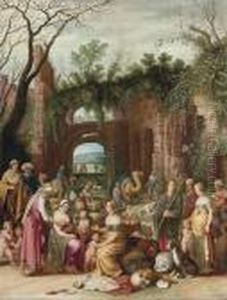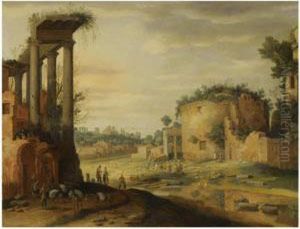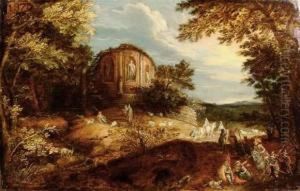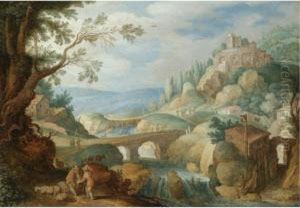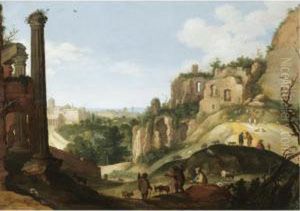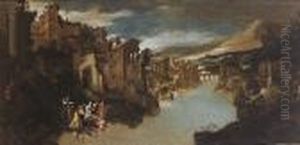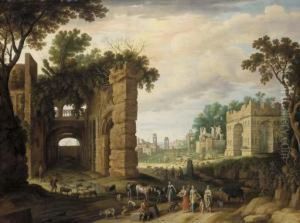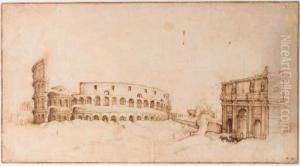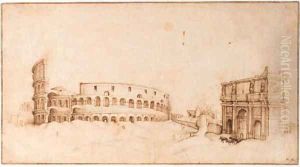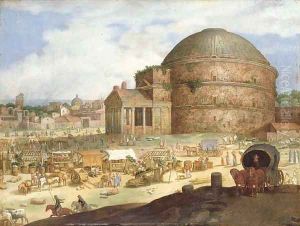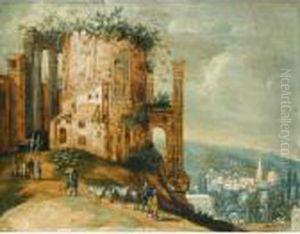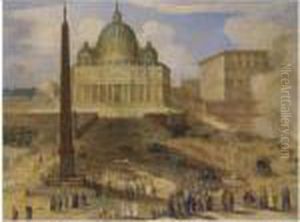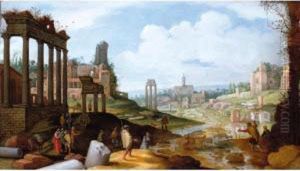Willem van, the Younger Nieulandt Paintings
Willem van Nieulandt the Younger was a Dutch Golden Age painter, poet, and engraver born in Antwerp in 1584. He hailed from an artistic family; his father was the painter and draftsman Willem van Nieulandt the Elder. His family moved to Amsterdam in the Northern Netherlands around 1599, where the younger Nieulandt would spend the majority of his life and career.
Nieulandt was known for his landscape paintings and was influenced by the Romanist style, which was characterized by the incorporation of elements inspired by classical antiquity and the Italian Renaissance. His works often featured ruins and classical motifs, showing the influence of his travels to Italy, where he studied the works of classical artists and was exposed to the Italian landscape. He spent a significant amount of time in Rome, where he became a member of the Bentvueghels, a society of predominantly Dutch and Flemish artists working in Rome. It was customary for members of the Bentvueghels to adopt a nickname, and Nieulandt was known as 'Adelaer' (Eagle).
In addition to landscapes, Nieulandt also produced religious scenes, genre scenes, and occasional portraits. His engravings and drawings also form an important part of his oeuvre. As a poet, he composed verses that were published in his lifetime, demonstrating his engagement with the broader cultural and intellectual currents of his time.
Nieulandt's works were collected by art connoisseurs in Amsterdam and beyond, and his influence was felt among other artists of the Dutch Golden Age. Despite his talents, he has not attained the same level of fame as some of his contemporaries. He died in 1635 in Amsterdam, leaving behind a body of work that reflects a transitional period in Dutch art, bridging the late Mannerist style and the emerging Baroque sensibility.

